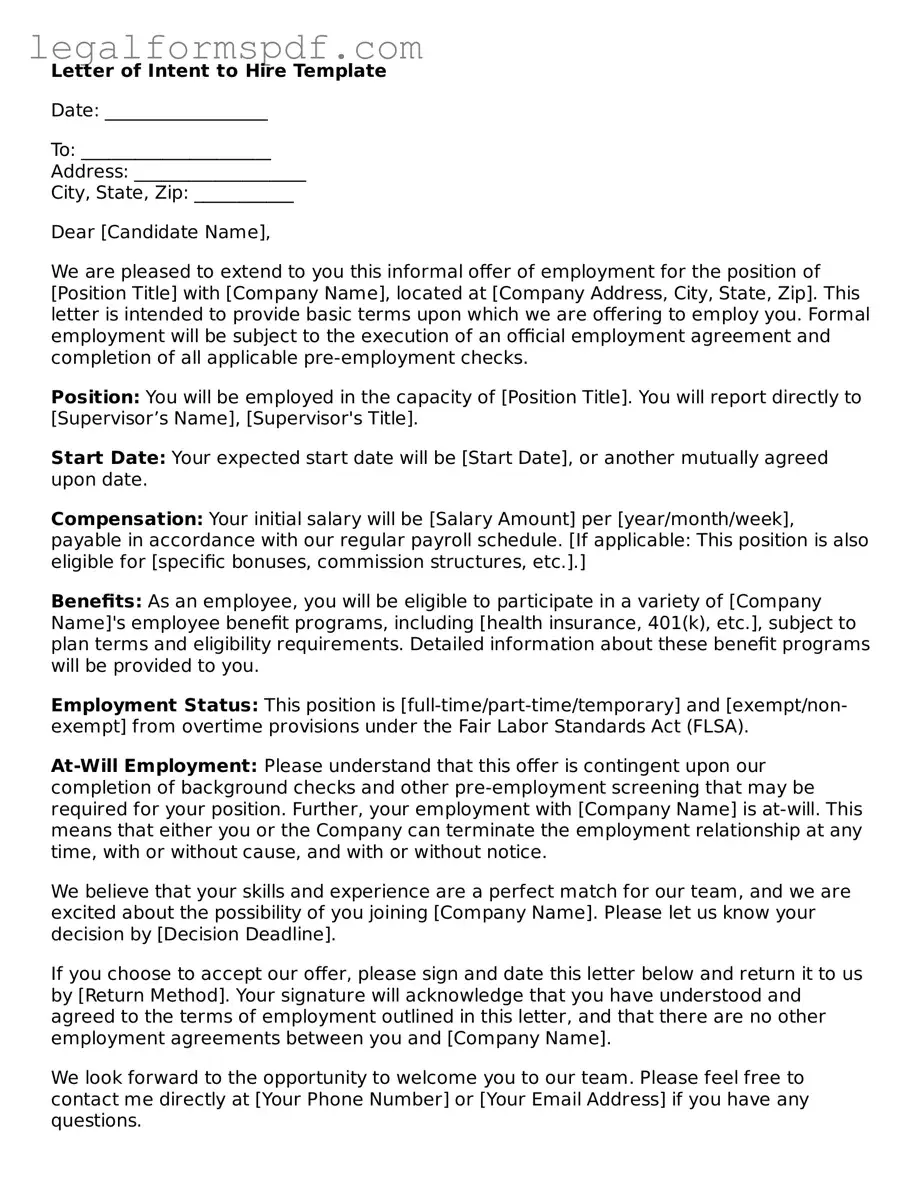Letter of Intent to Hire Template
Date: __________________
To: _____________________
Address: ___________________
City, State, Zip: ___________
Dear [Candidate Name],
We are pleased to extend to you this informal offer of employment for the position of [Position Title] with [Company Name], located at [Company Address, City, State, Zip]. This letter is intended to provide basic terms upon which we are offering to employ you. Formal employment will be subject to the execution of an official employment agreement and completion of all applicable pre-employment checks.
Position: You will be employed in the capacity of [Position Title]. You will report directly to [Supervisor’s Name], [Supervisor's Title].
Start Date: Your expected start date will be [Start Date], or another mutually agreed upon date.
Compensation: Your initial salary will be [Salary Amount] per [year/month/week], payable in accordance with our regular payroll schedule. [If applicable: This position is also eligible for [specific bonuses, commission structures, etc.].]
Benefits: As an employee, you will be eligible to participate in a variety of [Company Name]'s employee benefit programs, including [health insurance, 401(k), etc.], subject to plan terms and eligibility requirements. Detailed information about these benefit programs will be provided to you.
Employment Status: This position is [full-time/part-time/temporary] and [exempt/non-exempt] from overtime provisions under the Fair Labor Standards Act (FLSA).
At-Will Employment: Please understand that this offer is contingent upon our completion of background checks and other pre-employment screening that may be required for your position. Further, your employment with [Company Name] is at-will. This means that either you or the Company can terminate the employment relationship at any time, with or without cause, and with or without notice.
We believe that your skills and experience are a perfect match for our team, and we are excited about the possibility of you joining [Company Name]. Please let us know your decision by [Decision Deadline].
If you choose to accept our offer, please sign and date this letter below and return it to us by [Return Method]. Your signature will acknowledge that you have understood and agreed to the terms of employment outlined in this letter, and that there are no other employment agreements between you and [Company Name].
We look forward to the opportunity to welcome you to our team. Please feel free to contact me directly at [Your Phone Number] or [Your Email Address] if you have any questions.
Sincerely,
_______________________
[Your Name]
[Your Title]
[Company Name]
[Company Address]
[City, State, Zip]
________________________________
Signature of Candidate
Date: __________________
This document is not a contract of employment and cannot create any contractual obligations for either party. The terms outlined are subject to change based on the execution of a formal employment agreement and applicable state and federal laws.
